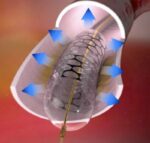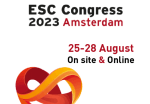Original Title: Benefits and Risks of Extended Dual Antiplatelet Therapy after Everolimus-Eluting Stents. For the Dual Antiplatelet Therapy (DAPT) Study Investigators. Reference: James B. Hermiller et al. JACC: Cardiovascular Interventions 2015, online before print. The DAPT study had shown that continued aspirin plus thienopyridine beyond a year reduces ischemic events. Given the fairly low rate of thrombosis...
OPTIMIZE: 3 versus 12 months dual antiplatelet therapy after angioplasty with DES
Currently the recommendation is 12 months of dual antiplatelet after a drug-eluting stent angioplasty. This study compared the 3 – months versus 12 months of dual antiplatelet after angioplasty with zotarolimus-eluting stent in real-world patients. This was a prospective, multicenter study randomized 1563 patients to receive aspirin and clopidogrel for 3 months and 1556 to...
Risks and benefits of extending dual antiplatelet therapy in patients with and without MI
Original title: Benefits and Risks of Extended Duration Dual Antiplatelet Therapy after PCI in Patients With and Without Acute Myocardial Infarction. The DAPT Study. Reference: Robert W. Yeh et al. J Am Coll Cardiol. 2015, online before print. The risks and benefits of prolonged antiplatelet therapy after PCI could be different in patients presenting with AMI compared to...
Zotarolimus eluting stent with one month of dual antiplatelet therapy
Original title: Zotarolimus-Eluting Versus Bare-Metal Stents in Uncertain Drug-Eluting Stent Candidates. Reference: Marco Valgimigli et al. J Am Coll Cardiol. 2015;65(8):805-815. The use of drug eluting stents (DES) in patients at high risk of bleeding or thrombosis has not been studied prospectively. Data on patients at high risk of bleeding and low restenosis are limited. This study compared...
Never ending controversy over the duration of post DES dual antiplatelet therapy
Original title: Second Generation Drug-Eluting Stents Implantation Followed by Six Versus Twelve-Month – Dual Antiplatelet Therapy- The SECURITY Randomized Clinical Trial. Reference: Antonio Colombo et al. J Am CollCardiol. 2014 Nov 18;64(20):2086-97. The optimal duration of dual antiplatelet therapy after second-generation DES implantation is still debated and apparently will remain controversial for some time. The aim of this...
Six Months Sufficient for Dual Antiplatelet Therapy
Reference: Kandzari DE, Barrer CS, Leon MB, et al. Dual antiplatelet therapy duration and clinical outcomes following treatment with zotarolimus-eluting stents. JACC Cardiovasc Interv 2011; 4: 1119-28.2011; 4: 1119-28. Patients treated with zotarolimus-eluting stents (ZES) suffer no excess late ischemic events if they take dual antiplatelet therapy for 6 months instead of 12 months or longer,...
Single Antiplatelet Therapy Following Percutaneous Left Atrial Appendage Occlusion
Percutaneous left atrial appendage occlusion (LAAO) has surged as an effective alternative to treat patients with atrial fibrillation (AF) presenting counterindications for oral anticoagulants. However, the optimal antithrombotic treatment after LAAO is still debated, seeing as it should prevent device related thrombosis (DRT) while minimizing bleeding risk. The aim of this retrospective study carried out...
Clopidogrel Monotherapy Beyond 12 months: Long Term Analysis of the STOPDAPT-2
Short dual antiplatelet therapy (DAPT) has shown benefits in patients receiving drug eluting stents (DES), reducing bleeding with no concomitant increase in major adverse cardiovascular events (MACE). Traditionally, the therapeutic window was limited to monotherapy with P2Y12 inhibitors during the first year and there are few data on short DAPT followed by long term monotherapy...
ESC 2023 | Extended Monotherapy with Clopidogrel vs. DAPT in High-Risk Patients
An increasing number of patients currently present both an elevated ischemic risk and hemorrhagic risk. This means that the selection of the optimal antiplatelet treatment is a clinical challenge. Several studies have shown that P2Y12 monotherapy after minimum dual antiplatelet therapy (DAPT) is a novel strategy to reduce bleeding risk without increasing ischemic risk. Furthermore,...
MACT Study: Monotherapy with P2Y12 Inhibitor Associated with Colchicine after Acute Coronary Syndrome
Dual antiplatelet therapy (DAPT) is the current standard for preventing thrombotic events in high-risk patients with coronary artery disease, as well as in patients with acute coronary syndrome (ACS) undergoing percutaneous coronary intervention (PCI). However, this approach increases the risk of bleeding. To reduce this risk, there have been studies that discontinued the use of...








